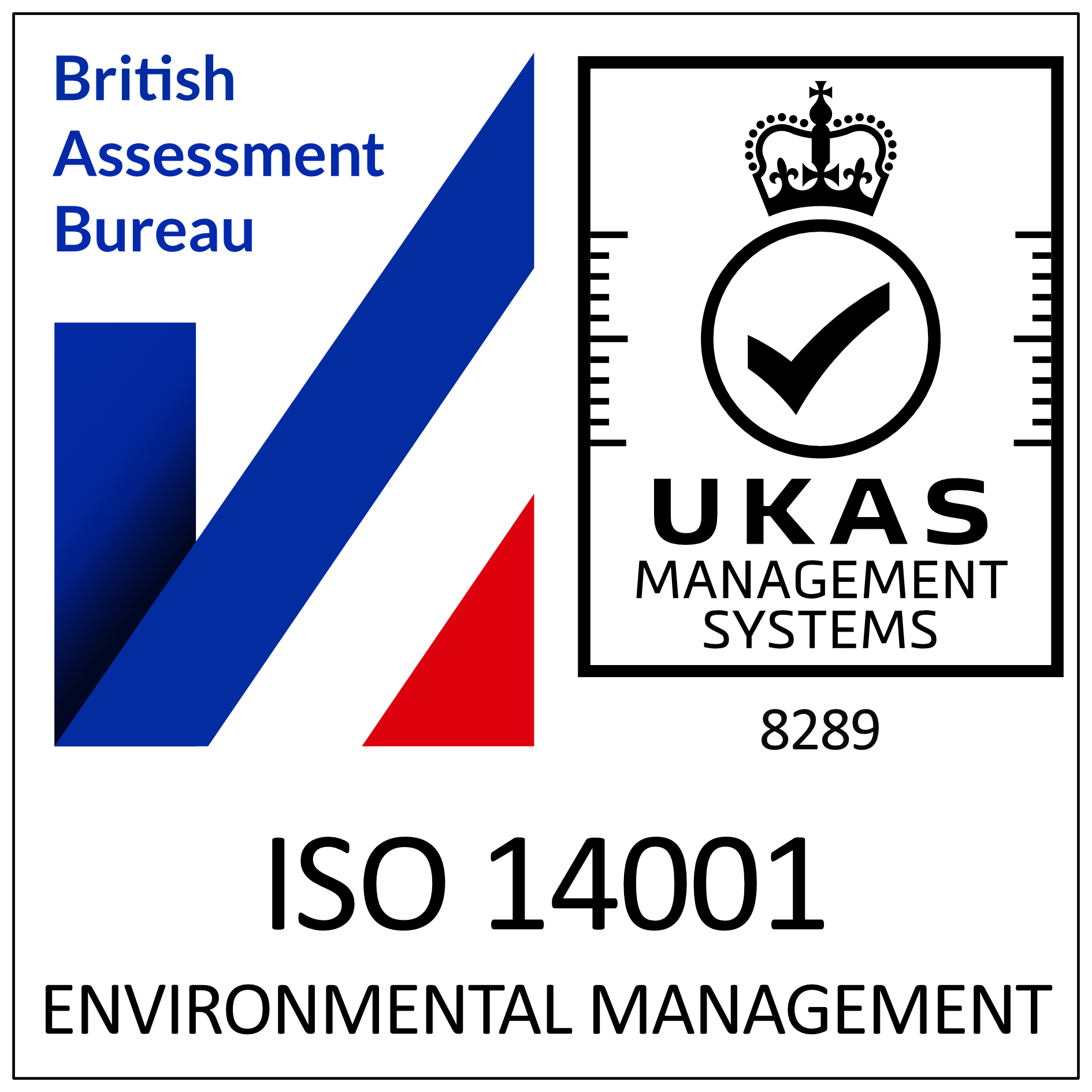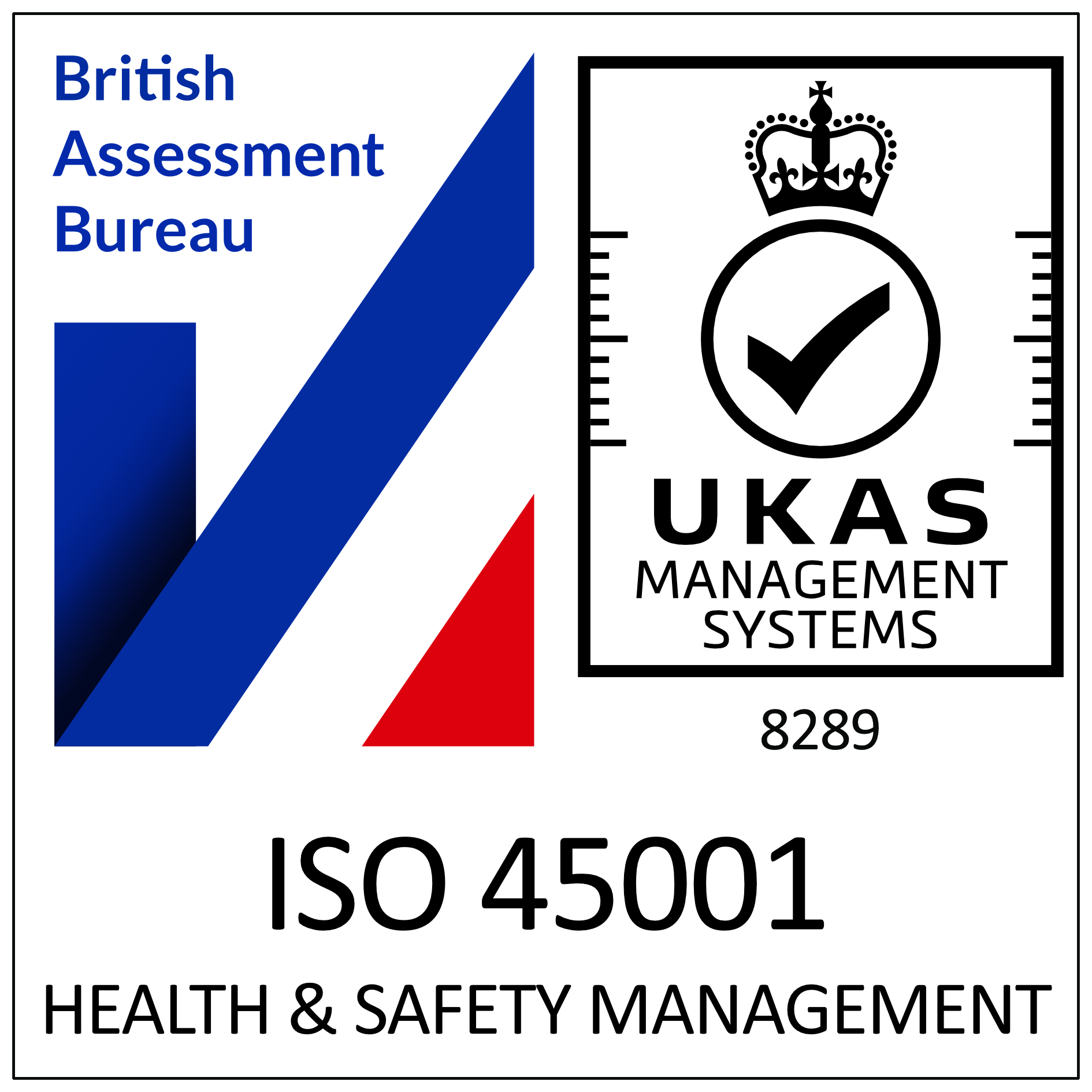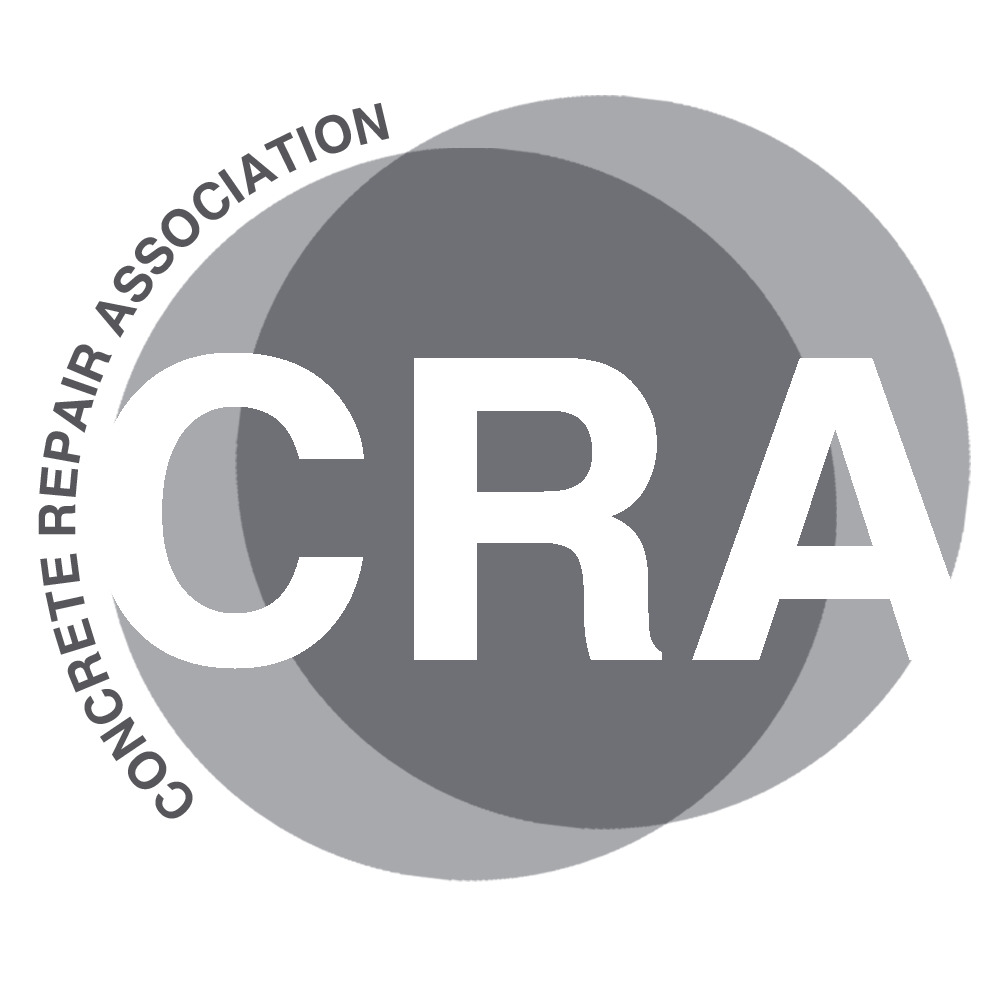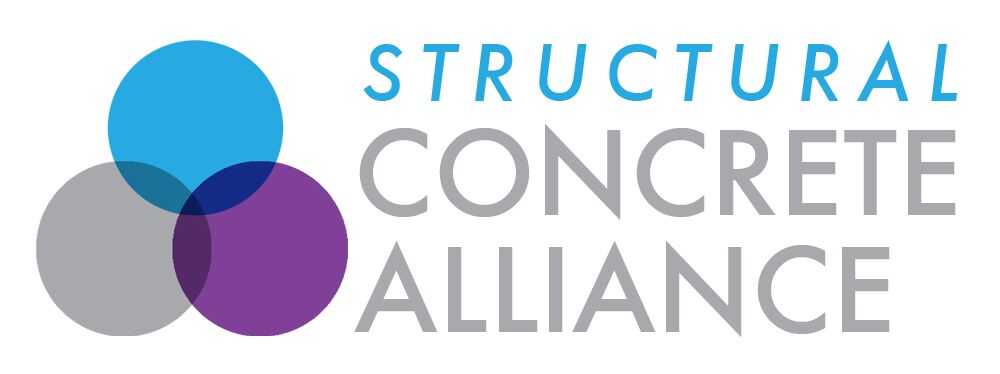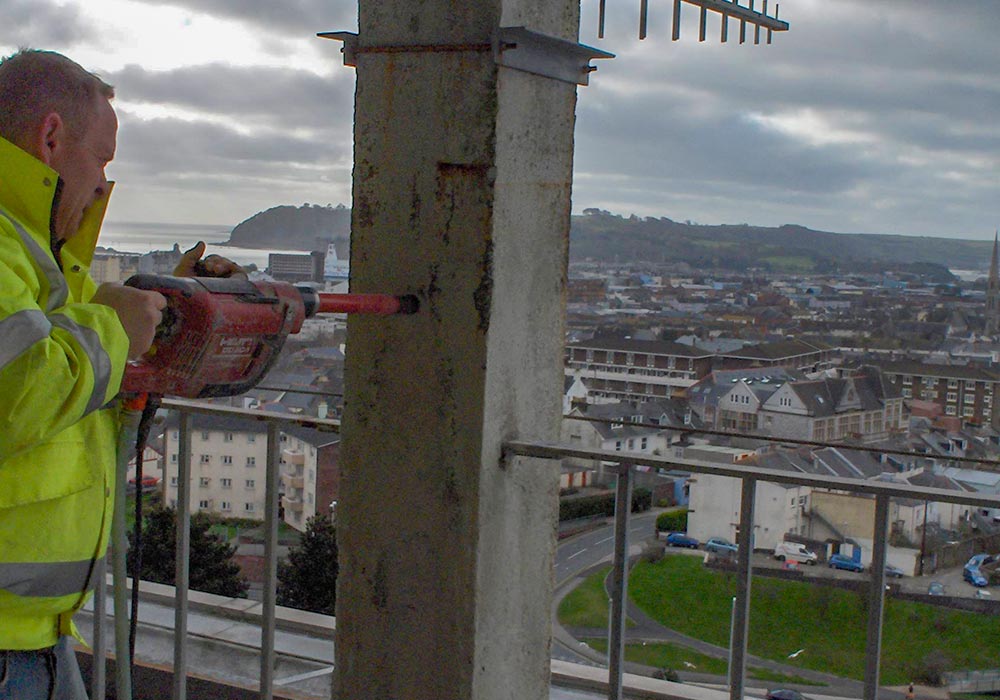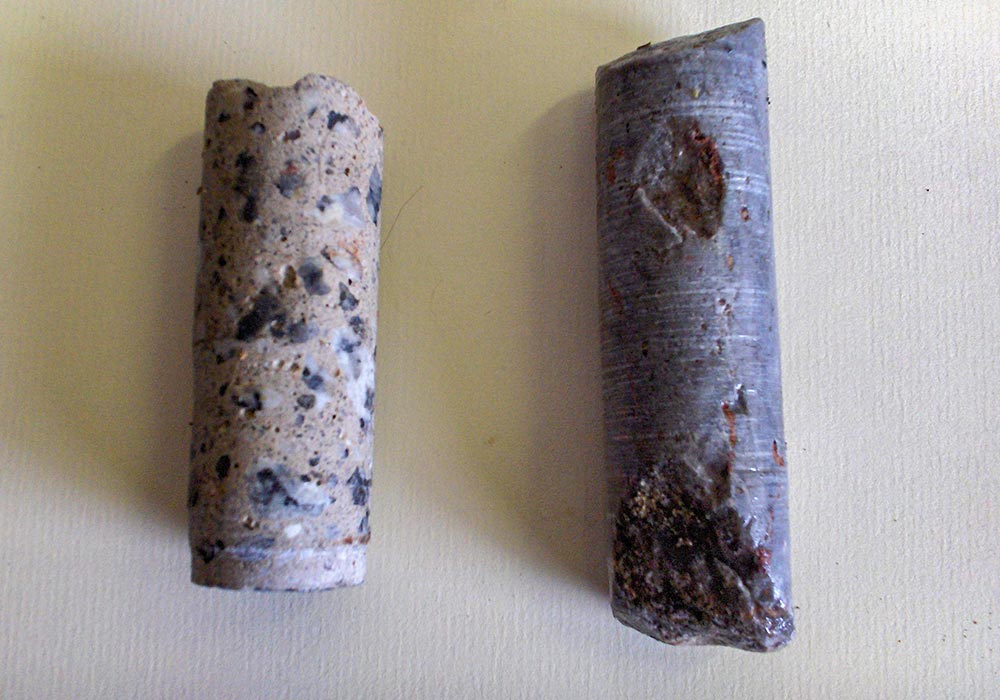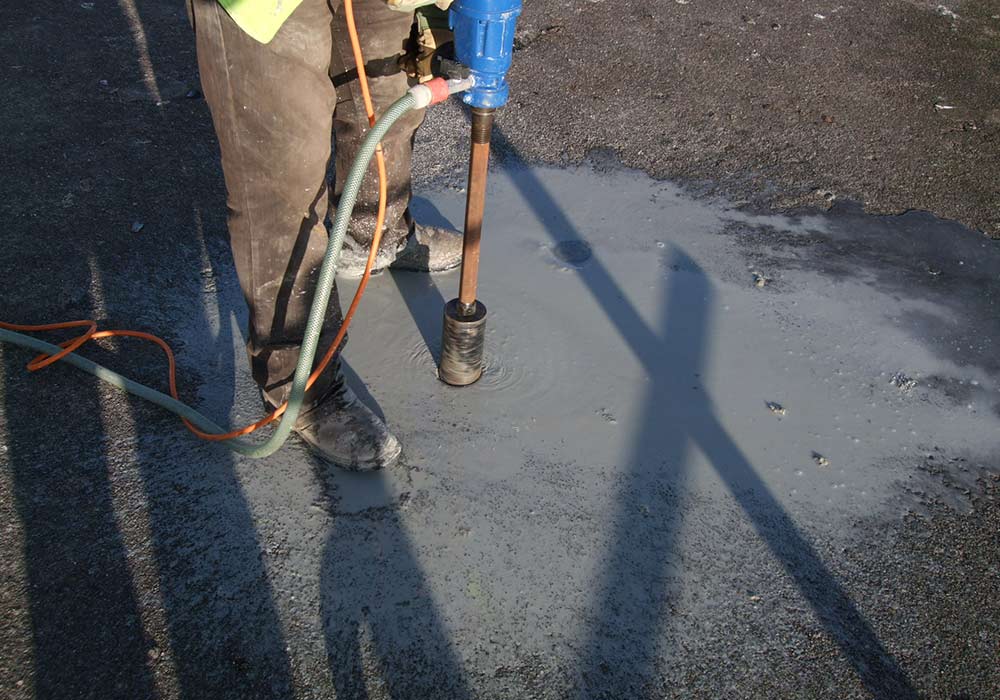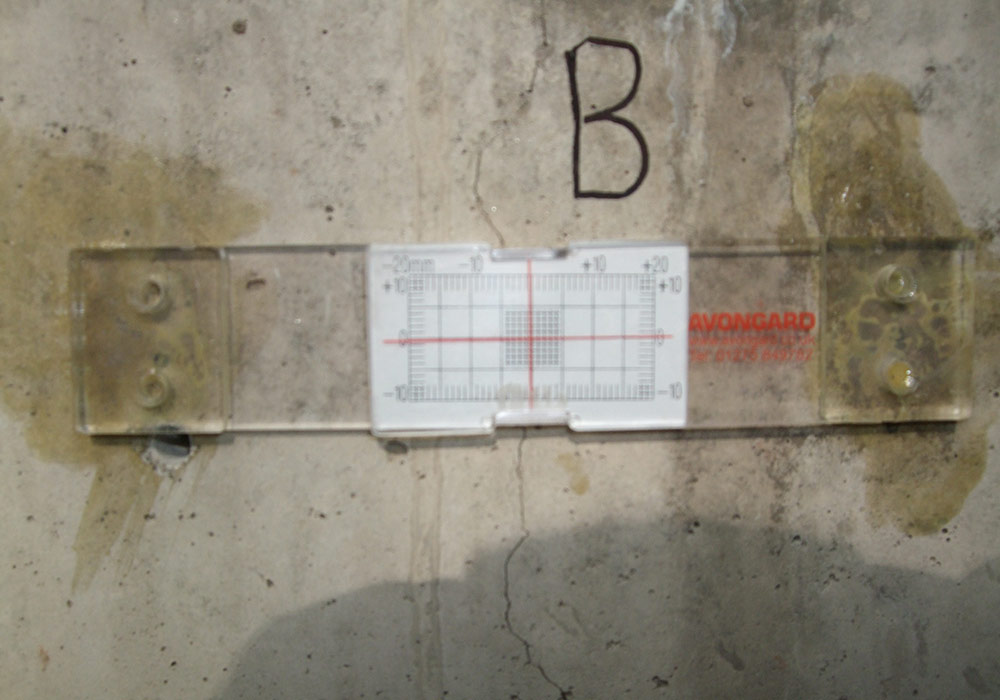Comprehensive Survey & Testing
Introduction
Correct diagnosis of the causes of deterioration and failure is essential before deciding the best products and most cost-effective method of repair and future protection.
South West Concrete Repairs Ltd offer a full range of onsite investigative, exploratory works including non-destructive testing and sample taking for laboratory analysis. Working with the technical departments of our material manufacturers and with a variety of specialist engineers, UKAS accredited laboratories and other support contractors we can offer an independent, comprehensive report and recommendation service tailored to the client’s requirements.
Non Destructive Testing & Surveys
Destructive Sample Testing & Surveys
VISUAL SURVEYS
Include standard site inspection with photographic support and measurements, used to determine the possible reasons for concrete deterioration and to give an appraisal of the concrete condition and compilation of schedules of dilapidations etc.
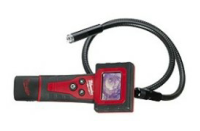
BOROSCOPE SURVEYS
Using various inspection cameras we can investigate inaccessible areas such as wall cavities and behind concrete panels. Useful to determine how panels and the like are fixed in position and the condition of those fixings.
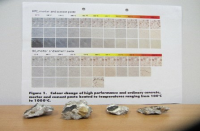
COLORIMERTY SURVEY
Is used as an initial assessment of fire damaged areas. Using comparative charts the discoloration ‘pinking’ of the concrete due to excessive heat exposure can be assessed to determine if additional petrographic analysis is needed.

DRONE SURVEYS
Can be a basic drive past filming to show a general overall condition to help with an overview of the structure condition and to help determine the need for more involved survey such as full drone data capture or the need for access such as full scaffolds or MEWP (Mobile Elevating Work Platforms).
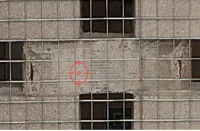
DRONE DATA CAPTURE SURVEY
This type of survey uses a full data capture package so that each area can be properly analysed. It can also include deflection and thermal imagery and 2D and 3D models of the structure can be created as well as AutoCAD models to create ‘As Built’ drawings.
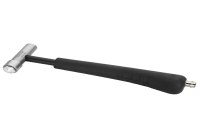
SOUNDNESS OR ACOUSTIC HAMMER TEST SURVEY
Using a tap test technique a general appraisal of the ‘soundness’ of the concrete can be made as it identifies hollow or honeycombed areas beneath the surface and delamination of any coatings or finishes.
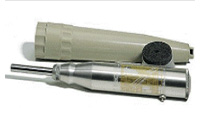
REBOUND OR SCHMIDT HAMMER TESTS
This mechanical device has a spring-loaded percussion plunger and records the rebound when used against the surface. Because there is a direct relationship between the rebound and the surface hardness an approximate indication of strength and also the variability in strength over areas of the structure.
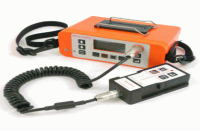
COVER METER SURVEYS
Uses ground penetrating radar (GPR) and Identifies steel reinforcement within the structure and is used to determine steel reinforcement bar spacing, size of reinforcement bars and the depth of reinforcement from the surface.
HALF – CELL MAPPING
Uses the cover meter equipment and measures the corrosion potential of an embedded reinforcement bar. By fitting a reference electrode on the concrete and a connection direct onto the reinforcing steel, using the concrete as an electrolyte the potential difference can be recorded on a voltmeter.
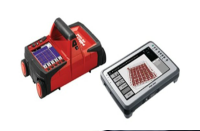
FERROSCAN SURVEY
Hilti (the manufacturer) have several different scanners, all will detect rebar within concrete, but some of the higher end units can be connected direct to a screen or laptop and using the software packages can give full 2D and 3D visualisations.
ULTRASONIC PULSE VELOCITY (UPV) TESTING
Provides information on the uniformity of the concrete. It identifies cracks, cavities and underlying defects using sonic pulse echo technology.
SCRATCH TEST
This basic test uses a sharp cold chisel to scrape across the surface to give an indication of the surface hardness and if there is any surface laitance and loose friable material on the surface.
INTRUSIVE BREAKOUTS
Are used to open up isolated areas to help understand the depth of any defects and also the reinforcement layout, the reinforcement bar sizes and to determine the reinforcement cover. Areas are broken out using handheld percussive breakers and handheld tools to expose the reinforcement. The sizes and depths are recorded and can be used as a control for further cover meter or reinforcement survey works.
SAMPLE EXTRACTION FOR LABORATORY TESTING
Concrete cores, broken out sections of concrete and dust samples are required for any of the laboratory tests. The type of sample dependant on the test required. Concrete cores are drilled out using a core drill with diamond tipped core bit and core rig. Dust samples are taken using a percussion drill and are usually taken at specific varying depths for comparative analysis. Concrete sections are broken out using the same method for Intrusive breakouts described above.
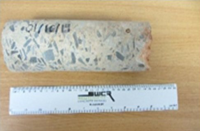
SAMPLE EXAMINATION
Before sending to the laboratory for petrographic or Compressive strength testing cores are normally given a full visual examination and photographed. Details of the size and type of aggregate porosity etc are recorded on and supplied with the report.
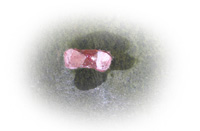
CARBONATION DEPTH TESTING
Is used to determine the depth and extent to which carbon dioxide has penetrated the concrete. The penetration of these gases reduces the natural alkalinity of concrete, leaving the steel reinforcement more likely to corrode. The test requires a Phenolphthalein solution to be sprayed onto a freshly fractured face of the concrete. Where a section of concrete cannot be broken out two are drilled side by side and the section of concrete between them snapped out to leave a freshly broken surface for testing.
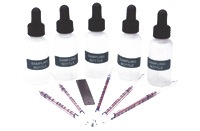
CHLORIDE TESTING
Determines the amount of chlorides within the concrete. Chlorides lead to an increased risk of corrosion of embedded metals. Concrete dust samples were extracted using a rotary percussive drill at differing depths and then sent to a UKAS accredited laboratory for Chloride Ion analysis. The tests results indicate the amount of chlorides present in the concrete.
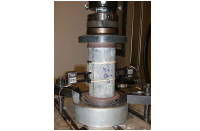
COMPRESSIVE STRENGTH (crush testing)
Is a destructive test where the core sample is crushed and the amount of pressure used to crush the core taken to give an indication of the overall strength of the concrete. Recording the moment and pressures required for the core to fail. Samples will have had the ends saw cut to ensure they are flat and perpendicular to the longitudinal axis and will be capped to ensure that equal pressures are applied by the crushing machine.
SULPHATE TESTING
Is carried out at the UKAS accredited laboratory using dust samples or core samples taken from site. Excessive amounts of water- soluble sulphate can cause expansion and disruption of concrete.
HAC (HIGH ALUMINA CEMENT)
HAC undergoes a crystalline re-arrangement which can result in a loss of strength of the concrete. The chemical analysis is carried out by the UKAS accredited laboratory and use dust samples or core samples taken from the site. The tests confirm if any HAC was used during construction of the building.
ASR (ALKALI SILICA REACTION)
Aggregates with low alkali resistance can react with alkaline fluids forming a silica gel which can absorb moisture and expand causing cracking and deterioration. Samples extracted on site are sent to the UKAS accredited laboratory to confirm if any ASR had occurred to the aggregates within the concrete.
CEMENT CONTENT
Determination is generally required in connection with chloride measurement and the assessment of corrosion risk. It is also used to confirm concrete mix proportions for known site mixes. Crushed samples of concrete are taken from supplied core samples or broken out sections and the resulting fine powder tested chemically.
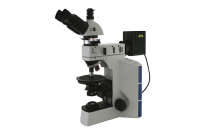
PETROGRAPHIC ANALYSIS / MICROSCOPIC EXAMINATION
Entails samples to be cut into very thin slices, ground and polished and then and examined under the microscope. Electron microscope, X-ray and infrared spectroscopy (for material Assessment) can all be used depending on the clients’ requirements. The optical features and microstructural traits of the materials can be investigated and evaluated. When the concrete has hardened, it can used to confirm that the product was mixed according to design and that the correct materials used. It can also determine the following:
- Air content and distribution, entrapped air.
- Aggregate type and sizes, bond to the cement paste crystals
- Issues such as ASR Alkali Silica Reaction
- Cracking and micro cracking
- Stel reinforcement integrity
- Secondary deposits (Environmental / Chemical Reactions etc.)
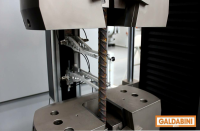
STEEL REINFORCEMENT TESTING
When required small lengths of steel reinforcement bar are extracted and sent to the laboratory for tensile strength testing and diameter steel loss through corrosion confirmation
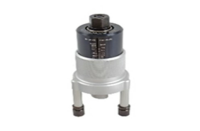
PULL – OFF TESTS
Is a method of measuring the adhesion of coatings (paints and renders etc) to the substrate below by applying a perpendicular tensile force. A stud or dolly is glued to the surface and pulled using a the pull off tester and the failure point measured. measured dare used
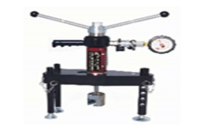
PULL – OUT TESTS
involve attaching the test rig to the bolt, screw, anchor or fixing. This is then put under a perpendicular tensile force load to determine how strong and secure the fixing is.
MAKING GOOD OF DISTURBED AREAS
Any core holes breakouts and drill holes etc which were made for the sample testing are all repaired in strict accordance with the British and European standard BS EN 1504 and to manufacturer’s instructions and recommendations as well as the CRA (Concrete Repair Association) guidelines and current codes of practice.
We can also offer…
South West Concrete Repairs Ltd have teamed up with a local Consulting Engineering Company, who have a fully equipped laboratory specialising in material testing. This enables us to offer:
- Point Load Tests
- Concrete Screening
- Soil Analysis
- Contamination Testing
- Hazardous Material Assessment


